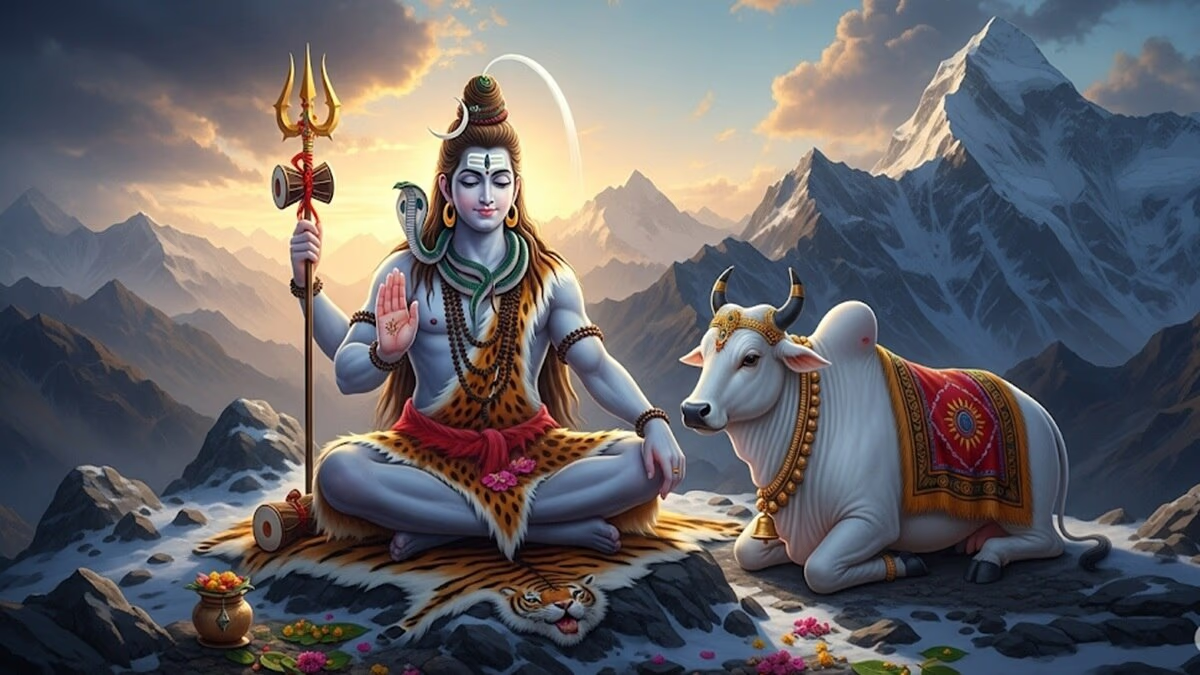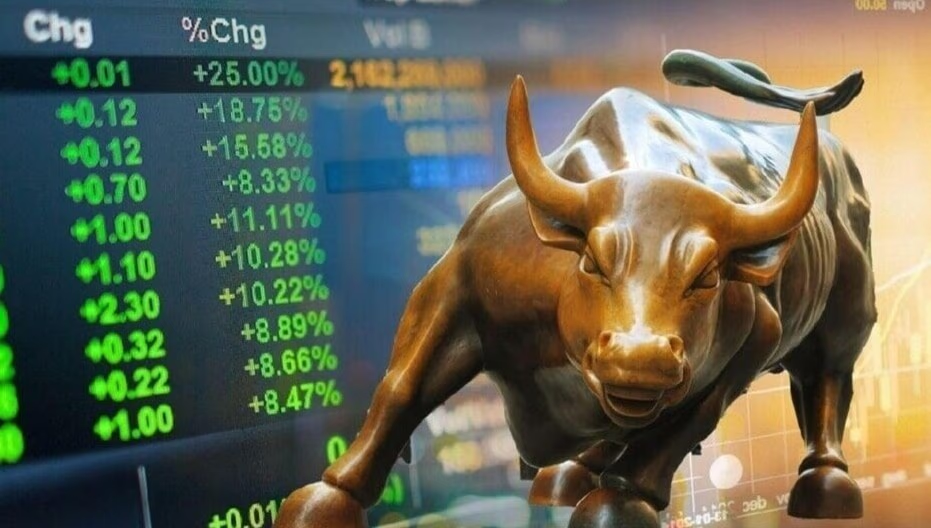Buzz is building around S.S. Rajamouli's upcoming project 'Varanasi'. Mahesh Babu is set to star in a pivotal role. The film seems to delve deep into the spiritual corridors of ancient Varanasi, as glimpses of various mythological characters appear in its announcement teaser. Devi Durga, her fierce form Chinnamasta, Hanuman, Lord Rama's chariot, and finally Mahesh Babu himself, riding a bull, wielding a trident. It's intriguing that Mahesh Babu's name also resonates with Lord Shiva, who is also known as Mahesh.
The Bull in Focus: 'Varanasi' Teaser
The teaser suggests that the bull might be a key character in the film, drawing significant attention to Mahesh Babu's striking appearance. This spotlight has brought the bull's symbolism to the forefront.
The bull holds a central place in Indian tradition and symbolism, most prominently associated with Shiva. Depicted riding a bull named Nandi, Shiva's sacred vehicle, Nandi serves as the leader of Shiva's followers, known as Ganas.
Symbolism of Bulls in Temples
Temples often portray Nandi, Shiva's loyal bull, sitting facing the Shiva Linga. Embodying service, humility, and grace, Nandi is also a symbol of strength and stability, demonstrating that true wealth lies in humility despite possessing immense power. This is a lesson every person can learn from Nandi's presence in Sanatana Dharma.

Source: aajtak
Origin Stories of Nandi
Various Puranas offer captivating tales about Nandi's origins. In one famous passage from the Shiva Purana, a sage named Shilada performed intense penance for thousands of years, desiring an extraordinary son. Pleased by his devotion, Lord Shiva granted him a divine boon, resulting in the birth of a celestial boy named Nandi, who later became Shiva's eternal companion.
The Curse and Transformation of Nandi
Another tradition tells of Nandi originally being a divine being called Nandikeshvara, cursed to transform into a bull. After penance to Lord Shiva, the curse was changed to ensure that Nandi would remain in bull form but be revered as Shiva's devoted follower and vehicle. Another version narrates how young Nandi disturbed a sage's meditation by bellowing like a bull, leading to his transformation into one by the sage's curse.
A third story connects Nandi with the churning of the cosmic ocean. During this event, performed by gods and demons to obtain nectar, a wondrous white bull emerged and was dedicated to Lord Shiva, gaining fame as Nandi. Although the celestial cow Kamadhenu also appeared, accompanied by a divine calf, it was this calf who became known as Nandi.
These tales share a common theme: Nandi's spiritual journey from a humble origin to a divine status through devotion and Shiva's grace, illustrating that steadfast devotion can help surpass one's limitations.
Nandi: A Profound Symbol in Hindu Culture
Nandi holds deep symbolic meaning in Hinduism. In the form of a bull (Vrishabha), Nandi embodies power, fertility, and righteousness. In ancient Indian culture, the bull signifies controlled strength and courage—powerful, yet disciplined. Nandi's white color symbolizes purity of mind and Sattva, an inherent quality of goodness. Just as bulls serve and assist humanity, Nandi's devotion to Shiva represents the ideal connection between deity and devotee.
The seated posture of Nandi in temples carries special significance, always facing the Shiva Linga. This steadfast gaze conveys a message of concentration and unwavering devotion. In this sacred scenario, Nandi symbolizes the soul, with Shiva representing the Supreme. The face-to-face position signifies the soul's aspiration to unite with the Supreme.
Nandi as Protector and Symbol of Prosperity
In rural India, Nandi is revered as livestock and a guardian of farmlands. Farmers often seek Nandi's blessing for healthy animals and abundant harvests. Nandi is so integral to Shiva worship that a temple is incomplete without him. While most divine vehicles are depicted in smaller forms, Nandi often enjoys a separate pavilion, known as Nandi Mandap.
Many grand Nandi statues in southern India are celebrated worldwide. The enormous Nandi on Chamundi Hills in Mysore measures 4.9 meters high and 7.6 meters long, and the single-stone Nandi at the Brihadeeswarar Temple in Thanjavur stands over 3.7 meters tall.
Nandi is part of a unique custom where people whisper their wishes in his ear, believing that Nandi conveys their desires directly to Shiva, thus serving as both a symbol and a conduit between devotees and the divine. Many temples practice independent worship and special adornment of Nandi, where he is adorned with sandalwood, flower garlands, and garments during festivals.

Source: aajtak
Legendary Tales Associated with Nandi
Nandi's devotion and divine status are illustrated by numerous stories. One famous tale centers around Shiva and Parvati's wedding. As the procession prepared to depart, the deities realized a suitable vehicle for Shiva was needed. Nandi transformed into a majestic white bull, adorned with jewels.
In another tale involving the demon Jalandhar, Nandi plays a critical role. When the gods couldn't defeat Jalandhar, Nandi revealed his weakness, leading to victory. This story underscores that intelligence and knowledge often triumph over brute strength. It was Nandi who initially imparted wisdom to Ravana, confronting him with his arrogance until he cursed Ravana that he would be vanquished by an army of monkeys and bears.
During the festival of Maha Shivaratri, Nandi is given special veneration. Devotees observe a night of vigil, perform anointment on the Shiva Linga, and offer sandalwood, flowers, and garments to Nandi. Legends say that once on Maha Shivaratri, Nandi observed a complete fast. Impressed by his austerity, Shiva granted him the boon of eternal companionship.
Kedarnath Dham and the Avatar of the Bull
In the sacred realms of the 12 Jyotirlingas and the revered Char Dhams, Shiva resides in bull form at Kedarnath. After the Mahabharata war, the Pandavas sought Shiva's grace, leading Shiva to disguise himself among cattle as a bull. Despite the ruse, Bhima recognized him, attempting to seize Shiva's leg. As Shiva retreated into the earth, only his hump remained visible. Since then, Shiva is worshipped in the form of a bull's hump at Kedarnath.
The Bull's Zodiac Presence
The bull features prominently among the 12 zodiac signs as the Taurus constellation, visually resembling a bull-shaped star cluster in the sky.
The bull not only holds a significant place in Hindu symbolism but resonates across numerous cultures globally. The bull's prominence traces back to the ancient Chinese zodiac legend, where the Jade Emperor conducted a race to select 12 zodiac animals. The ever-diligent bull, carrying the weary rat on its back, reached the finish line first. However, the clever rat leapt off just before crossing, securing the first position for itself, while the bull, though second, is cherished for its invaluable contribution to agriculture.
Regarded as the farmer's most prized asset in ancient China, bulls were considered family members. Their value in agriculture earned bulls a revered place in history.
Bulls in China, Korea, Russia, and Turkey
In China, different calendar years bear unique titles, one being the 'Year of the Ox'. The bull is significant in Buddhist traditions as well. In 2021, Chinese culture celebrated the 'Year of the Ox'. The English term “ox” has deep linguistic roots, stemming from the Proto-Indo-European 'uksḗn', through the Tokharian language, once spoken in China, now surviving in Turkish as 'öküz'. The Korean culture also embraces the Chinese zodiac, perceiving the bull as a symbol of diligence, integrity, and patience. The bull’s year is synonymous with peace and prosperity. Known fondly as the “walking treasure” of the farmer, bulls were highly prized for their utility. In Russia, bulls were historically revered as sacrificial animals with sacred phalanges, believed to bestow prosperity. Similarly, in Turkey, the bull symbolizes diligence, laboriousness, and strength.

Source: aajtak
Economic Symbolism of Bulls
In the realm of economics, bulls hold a pivotal role. Among investors, the terms 'bull' and 'bear' are key indicators, with bull markets signifying rising prices, while bear markets indicate declines. The preferred explanation links these terms to the attacking styles of the animals: bulls thrust upward with their horns, symbolizing rising prices, whereas bears swipe down, symbolizing market downturns. Today, a market experiencing a rise greater than 20% is known as a bull market, while a fall exceeding 20% is termed a bear market. These terms can be applied to individual stocks, sectors, or entire markets.




